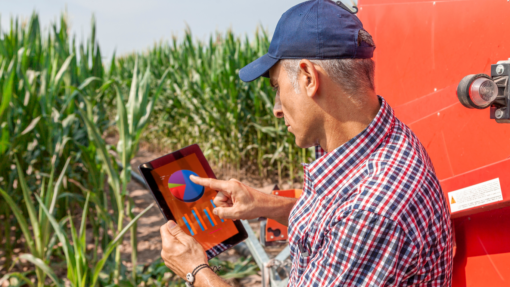In forage production, whether that is establishing a forage system or simply maintaining it, it is important to understand what costs are involved and how these can impact your break-evens. A break-even is the price/yield needed in order to cover your total costs. Depending on the type of forage system you have, the costs can be relatively expensive. Developing an enterprise budget is one way of examining and comparing these costs.
Figure 1 shows the costs per acre from forage enterprise budgets developed at Mississippi State for four different forage maintenance systems: 1) conventional alfalfa hay, 2) permanent summer pasture, 3) mixed grass hay, and 4) hybrid bermudagrass hay. The conventional alfalfa and the hybrid bermudagrass systems had the highest costs per acre at $957.63 and $954.22, respectively. Permanent summer pasture maintenance had the lowest costs per acre at $282.24/ac. Fertilizer, herbicide, and machinery costs make up a large portion of the costs in each system. Machinery costs include fuel, repair and maintenance, and interest costs.
Figure 1. Costs per acre for forage maintenance production systems in Mississippi

Figure 2 shows the break-even curves for each of the four forage production systems. Break-even curves show the price and yield needed to cover total specified expenses. Price/yield combinations below this curve would result in losing money, and any combination above the curve would generate a profit. The market price shown in the figure was the average hay price received by producers in Mississippi for 2022 at $126/ton. Hay prices and costs can vary significantly from state to state, so again, it is important to adjust for your situation. However, the basic idea is that production systems with higher costs need a higher price, yield, or both to be profitable. For example, at the Mississippi 2022 market price and assumed costs, a permanent summer pasture system would need to produce 2.2 tons/ac to break-even. A mixed grass hay system would need 4.9 tons/ac to break-even. A conventional alfalfa hay system and a hybrid bermudagrass hay system would each need to produce around 7.6 tons/ac given a price of $126/ton. As such, permanent summer pasture and mixed grass hay are two of the more popular forage systems in Mississippi.
Figure 2. Forage maintenance break-even curves in Mississippi

More information on these costs, as well as over 20 additional forage maintenance and establishment budgets for Mississippi, can be found at: https://www.agecon.msstate.edu/whatwedo/budgets.php. It is important to determine what your specific costs are, and these can vary significantly from state to state and by production system. Below are links to enterprise budgets developed by agricultural economists for each state in the Southern Region.
Alabama: https://www.aces.edu/blog/tag/profiles-and-budgets/?c=farm-management&orderby=title
Arkansas: https://www.uaex.uada.edu/farm-ranch/economics-marketing/farm-planning/budgets/crop-budgets.aspx
Florida : https://fred.ifas.ufl.edu/extension/commodityenterprise-budgets/
Georgia: https://agecon.uga.edu/extension/budgets.html
Kentucky: https://agecon.ca.uky.edu/budgets
North Carolina: https://cals.ncsu.edu/are-extension/business-planning-and-operations/enterprise-budgets/
Oklahoma: http://www.agecon.okstate.edu/budgets/
South Carolina: https://www.clemson.edu/extension/agribusiness/enterprise-budget/index.html
Texas: https://agecoext.tamu.edu/resources/crop-livestock-budgets/







